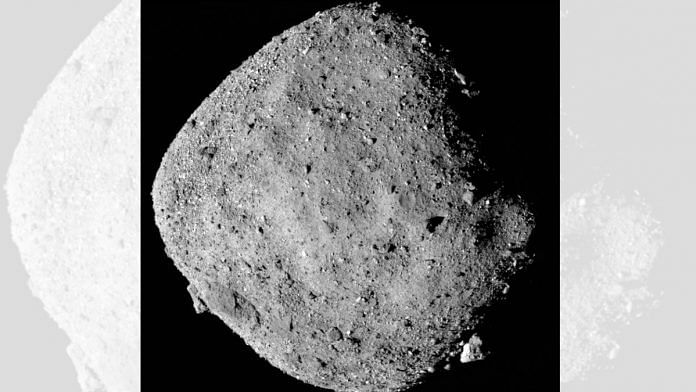Bengaluru: On Thursday, an asteroid called 2019 OK suddenly loomed large on astronomers’ radar, passing dangerously close to Earth.
It was big — estimated to be between 57 and 130m wide, about the size of a large airplane — and came within 73,000 km of the planet — a quarter of the distance between the Earth and the Moon.
Astronomers, who meticulously track all objects that come close to Earth, completely missed this until it was way too close.
2019 OK was detected independently by astronomers in the US and Brazil last week and later confirmed by NASA. Several asteroids pass between the Earth and Moon multiple times each year, but they’re usually very small and pose no threat. Even if they are on a path to slam into the Earth, they would incinerate in the atmosphere. However, this was the first time since they started being tracked that astronomers missed such a large asteroid.
Three other asteroids whizzed past Earth Thursday, posing no danger. Ominously, as Australian National University astronomer Brad Tucker told the Sydney Morning Herald, maybe many such rocks of this size fly very close past Earth and we just don’t detect them.
Also read: Giant asteroid has gold worth $700 quintillion. But it won’t make us richer
How did it not get detected?
There are several reasons why. For decades now, astronomers have been tracking near-Earth objects (NEOs) in an effort to safeguard the Earth from unknown and unexpected space visitors. As the popular joke goes, the dinosaurs died because they had no space programme.
At less than 130m wide, 2019 OK was nowhere close to the dinosaur-killing rock, which was at least 11km wide. Ninety per cent of asteroids that are over one kilometre wide have already been identified and are closely tracked. In fact, it is thought that in 2035, an asteroid called Bennu, which is already under exploration by a NASA mission, has a 1-in-2700 chance of hitting Earth. Plans are already in place to prevent that.
But asteroids the size of 2019 OK are hard to detect and track, unless they travel slowly and steadily within the range of detection. In other words, 2019 OK was travelling far too quickly for astronomers to notice something so small. It was moving at a speed of 24 kilometres per second when it was detected and catalogued last week, just days before it whizzed past. By contrast, asteroids near Earth typically move at average speeds ranging between 5 and 17 kilometres per second.
The asteroid also had a highly elongated orbit, stretching all the way from the vicinity of Venus to Mars. This means that it isn’t near the Earth for too long, and has thus evaded human detection in the past.
Lastly, the asteroid was coming towards Earth from the direction of the Sun, making it extremely hard to visually identify it.
What damage could it have caused?
As mentioned above, had 2019 OK actually hit Earth, it would not have caused the sort of damage that the dinosaur extinction event’s asteroid did, forming the enormous Chicxulub crater in what is now Mexico. But that doesn’t make 2019 OK completely harmless: It would have been able to wipe out an entire city.
“It would have hit with over 30 times the energy of the atomic blast at Hiroshima,” said Swinburne University astronomer Alan Duffy in the Sydney Morning Herald.
The Tunguska event that occurred in 1908, where an entire Siberian forest was flattened, was caused by an asteroid of comparable size.
Also read: An asteroid might be the reason why Earth has water




Dear Editor, this was a wonderful read. Please have more Articles on Science. The only version that people now get it is that of agenda-driven tree hugger version. Indian public deserves more.
Sir pls ..dont spread such type of fake news …for..ur trp ..why u give trouble ..to ..people ….god will hate u for ths …
To
The Editor,
The print.
Sir don’t air this type of news. You will loose your credibility.
Thak you